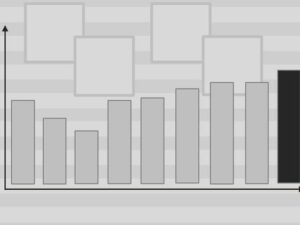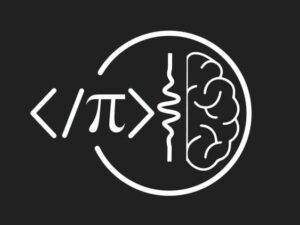Advanced Database Design Patterns in Action
- Descrição
- Currículo
- FAQ
- Revisões
In this hands-on course, Advanced Database Design Patterns in Action, we will dive deep into advanced database design techniques that go far beyond the basics. Starting with a basic implementation of an online store database, each lesson will introduce and apply a new design pattern to enhance the database’s speed, data integrity, or scalability. You’ll learn how to implement these advanced techniques in a way that solves real-world problems, enabling you to design highly efficient and robust databases.
What Makes This Course Stand Out:
-
Advanced Patterns Rarely Covered in Other Courses – This course tackles sophisticated concepts, from indexing strategies and horizontal partitioning to handling hierarchical data and multi-language support, preparing you to think and design like a database architect.
-
Hands-On, Project-Based Learning – You’ll build and optimize a realistic database project, seeing the immediate impact of each pattern and technique on performance and reliability.
-
Skills for Any RDBMS – While exercises use SQL Server, the principles you’ll learn are valuable across MySQL, PostgreSQL, Oracle, and other platforms.
Topics Covered Include:
-
Primary Key and Indexing Strategy
-
Foreign Keys and Constraints
-
Normalization (1st to 4th Normal Form)
-
Horizontal and Vertical Partitioning
-
Hierarchical Data Modeling
-
Multi-language Data Handling
-
Soft Deletes, History Tables, Computed Columns
-
Indexed Views, Precalculated Tables, Statistics, and more!
If you’re ready to master patterns that boost performance, scalability, and data integrity, this course will take you to advanced database design mastery.
-
15Section OverviewVídeo Aula
-
16HeapVídeo Aula
-
17Index BasicsVídeo Aula
-
18Nonclustered IndexVídeo Aula
-
19Nonclustered Index Types And Use CasesVídeo Aula
-
20Clustered Index - IntroductionVídeo Aula
-
21Clustered Index DesignVídeo Aula
-
22Clustered Index On An Integer ColumnVídeo Aula
-
23Clustered Index On A GUID ColumnVídeo Aula
-
24Clustered Index Type And A Table SizeVídeo Aula
A clustered index key size and its impact on a table size.
-
25(Script 002 #1) - Clustered Index Key Size ImpactVídeo Aula
A clustered index key size and its impact on nonclustered indexes.
-
26(Script 002 #2) - IDENTITY GapsVídeo Aula
-
27Nonclustered Primary KeysVídeo Aula
-
28Data Access OperatorsVídeo Aula
-
29Query PatternsVídeo Aula
-
30(Script 002 #3) - Indexes And CardinalityVídeo Aula
-
31(Script 002 #4) - Composite IndexVídeo Aula
-
32(Script 002 #5) - Composite Index vs Index With Included ColumnVídeo Aula
-
33(Script 002 #6) - Non-sargable queriesVídeo Aula
-
34Nested LoopsVídeo Aula
-
35Merge JoinVídeo Aula
-
36Hash JoinVídeo Aula
-
37(Script 002 #7) - Indexing For JOINVídeo Aula
-
38(Script 002 #8) - Indexing For ORDER BYVídeo Aula
-
39(Script 002 #9) - Indexing For GROUP BYVídeo Aula
-
40(Script 002 #10) - Indexing For COUNTVídeo Aula
-
41(Script 002 #11) - Indexing For MIN, MAX, SUM, AVGVídeo Aula
-
42(Script 002 #12) - Analyzing indexes with DMVsVídeo Aula
-
43Indexing StrategyQuestionário
-
44Section OverviewVídeo Aula
-
45Foreign Keys - IntroductionVídeo Aula
-
46Types Of Referenced TablesVídeo Aula
-
47On Delete, On Update Settings GuidelinesVídeo Aula
-
48(Script 003 #1) Getting Information About Foreign KeysVídeo Aula
-
49(Script 003 #2) Foreign Key Index And Cascade DeleteVídeo Aula
-
50(Script 003 #3) Foreign Key Index And Join PerformanceVídeo Aula
-
51Foreign KeyQuestionário
-
52Section OverviewVídeo Aula
-
53NormalizationVídeo Aula
-
541st Normal FormVídeo Aula
-
552nd Normal FormVídeo Aula
-
563rd Normal FormVídeo Aula
-
57Boyce-Codd Normal Form (BCNF)Vídeo Aula
-
584th Normal FormVídeo Aula
-
59Normalization – Mental ModelVídeo Aula
-
60How Far To NormalizeVídeo Aula
-
61(Script 004) Splitting The Customer TableVídeo Aula
-
62(Script 005 #1) Splitting The Name Column - Problem DefinitionVídeo Aula
-
63(Script 005 #2) Splitting The Name Column - Scaffolding codeVídeo Aula
-
64(Script 005 #3) Splitting The Name Column - Data migrationVídeo Aula
-
65NormalizationQuestionário












